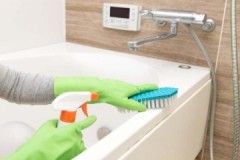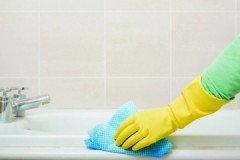Tips from experienced housewives on how to clean the bathtub white with home remedies
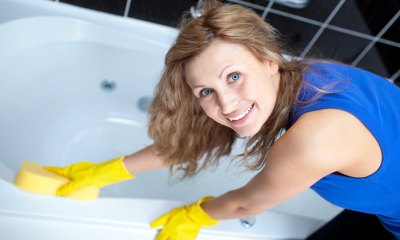 No matter how careful the operation of the bathroom is, dirt and plaque will appear on its surface over time. As a result, the appearance loses its attractiveness, and the bath itself becomes unhygienic.
No matter how careful the operation of the bathroom is, dirt and plaque will appear on its surface over time. As a result, the appearance loses its attractiveness, and the bath itself becomes unhygienic.
The problem can be solved not only by using special means, but by simple folk methods.
How to clean the bath white with folk remedies at home, we will tell in the article.
Content
Top 10 popular recipes
Homemade bathtub cleaning recipes can be just as effective as store-bought products. When using them, you must follow the procedure and rules for use.
Soda with vinegar
In cases where stubborn contamination occurs, vinegar and baking soda can be used in such a way that the reaction between these substances takes place on the contaminated surface.
Procedure:
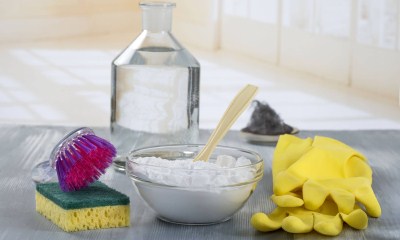 Wipe the surface of the bath with a rag soaked in water.
Wipe the surface of the bath with a rag soaked in water.- Sprinkle baking soda over the bath until a thick layer forms.
- Let stand for 10 minutes.
- Drizzle with vinegar.
- Leave for 20 minutes.
- Wipe the bath with a sponge.
- Wash off with water.
The method is suitable for enamelled cast iron baths.
Vinegar
You can use table vinegar to clean the tub. Its use allows you to remove rusty streaks.
Lemon acid
Treating the bath with a citric acid solution will help remove rust and yellowness. Procedure:
- pour 1 glass of warm water into the prepared container;
- add 1 sachet of citric acid to the water;
- stir so that the powder dissolves;
- moisten a napkin in the solution and wipe the surface;
- leave for 30 minutes;
- wash off.
Salt and wine vinegar
 To give the enamel bath whiteness, a solution prepared from half a glass of wine vinegar and 1 tbsp is suitable. kitchen salt.
To give the enamel bath whiteness, a solution prepared from half a glass of wine vinegar and 1 tbsp is suitable. kitchen salt.
The order of work:
- The ingredients are mixed in a container.
- Heated to a temperature of 60 ° C.
- Apply to areas to be bleached.
- Leave to act for 20 minutes.
- Wash off.
Oxalic acid
Oxalic acid can be used to remove rust marks from acrylic bath surfaces. Preparation and use procedure:
- pour 1 glass of water into the container;
- add 1 tbsp. l. oxalic acid;
- apply to areas affected by rusty streaks;
- leave for an hour;
- drain with water.
Hydrogen peroxide and sodium salt
The recipe is suitable for removing heavy rust from the bottom of a cast iron bath. Preparation:
- Pour 3 liters of water into a bucket.
- Pour in ¼ glass of hydrogen peroxide.
- Pour in 4 tbsp. l. sodium salt.
- Stir.
Laundry soap and soda ash
The recipe based on soda ash and soap is suitable for complex processing. Both components must be taken in equal proportions.
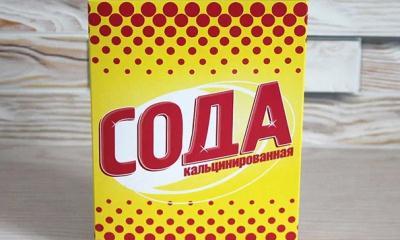 Cooking procedure:
Cooking procedure:
- grate the soap;
- mix with soda;
- add a little water to form a gruel;
- apply to the surface;
- withstand an hour;
- rub the bath with a sponge;
- wash off.
This composition is neutral in relation to all types of bath surfaces.
Washing powder, peroxide and soda
A baking soda, laundry detergent and peroxide based cleaning mixture can be used for all types of baths. This composition allows you to remove rust and lime.
Procedure:
- Pour ¼ cup of peroxide into the prepared container.
- Add 2 tbsp. l. soda and powder.
- Pour in hot water (1 glass).
- Wet the sponge in the solution, treat the surface of the bath.
- Leave on for 30 minutes.
- Wash off.
Cleaning powder, peroxide, tartar
To prepare a cleaning compound the following ingredients are required:
- Cleaning powder (e.g. SARMA or Gala) - 0.3 kg
- Peroxide - 70 ml.
- Wine stones - 5 grams.
Connect all the components. The result is a cleaning paste that can be easily applied to the bath surface. It is left to act for a quarter of an hour, after which it is washed off with water.
Ammonium and peroxide
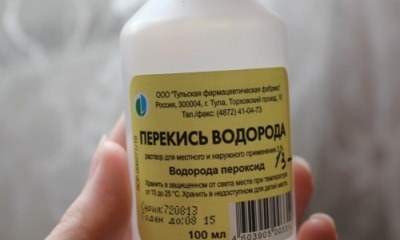 An anti-yellow bath cleaner can be made from two ingredients - hydrogen peroxide and ammonia.
An anti-yellow bath cleaner can be made from two ingredients - hydrogen peroxide and ammonia.
Procedure:
- combine ½ cup of peroxide with 1 cup of ammonia;
- wipe the bath;
- leave for a few minutes to act;
- wash off.
The prepared solution will allow you to whiten not only the bath, but also the tiles.
Features of cleaning taking into account the material of the container
Bathtubs can be made from various materials. The most popular finishes are acrylic and enamelled cast iron.
Enamel
Enamelled cast iron baths have a durable coating with a long service life. Despite the strength, enamel is sensitive to abrasives, therefore, intense exposure to hard brushes is best avoided.
Ceramics
Maintenance of a ceramic bath has its own characteristics. Do not use hard brushes for cleaning, and the cleaning itself should be regular. The outer glaze is well tolerated by acids (eg acetic).
Plastic
Plastic is very sensitive to almost any impact and is short-lived. The best way to clean it is to use warm soapy water and a sponge.
Tree
 The wooden bathtub is environmentally friendly. This addition to the bathroom will give it an unusual original look.
The wooden bathtub is environmentally friendly. This addition to the bathroom will give it an unusual original look.
But this will require enough complex care that includes:
- high-quality washing after each use, which will prevent the appearance of difficult stains;
- you can only use cleaning agents that are intended for surfaces covered with varnish;
- wiping dry between baths.
Acrylic
Acrylic baths do not tolerate corrosive acids and concentrated alkaline compounds. Recipes based on alcohol, ammonia, and chlorine are also not suitable for such surfaces. The best option is soft solutions that are applied with a sponge or rag.
Stone
A quality stone bathtub is an expensive product... They are made from artificial or natural materials. The surface of such baths is smooth, non-corrosive and not prone to fungus formation.
Marble
A marble bath is expensive and very demanding in terms of care products. The safest recipe for cleaning such a surface is soapy water.
If the surface is white, then lemon juice and salt will help to whiten it.... Commercial commercial cleaning agents are not recommended.
Marble bathtubs need periodic professional restoration work.
Kvaril
 Kvaril is a modern polymer material consisting of acrylic and quartz sand. This composition provides good strength, including resistance to mechanical stress.
Kvaril is a modern polymer material consisting of acrylic and quartz sand. This composition provides good strength, including resistance to mechanical stress.
Feature of the operation of kvaril baths:
- Avoid hitting the bath with heavy objects.
- Do not draw very hot water.
- Can be cleaned with any compound, even abrasive.
A significant disadvantage of such baths is a very high price.
Cleaning chrome elements
When tidying up the bath itself, do not forget about the mixer, fittings and the shower hose. These parts also need cleaning.
For cleansing, you can use:
- vinegar;
- toothpaste;
- dentifrice;
- soda.
10 useful tips
Clean the bath properly the following expert advice will help:
- All cleaning work should be carried out with rubber gloves.
- It is not recommended to use acetone and technical acids to remove contaminants, as they can damage the surface of the material.
 Even in advanced cases, you should not use serious abrasives - metal brushes, sandpaper, etc. This limitation applies to all types of coverage.
Even in advanced cases, you should not use serious abrasives - metal brushes, sandpaper, etc. This limitation applies to all types of coverage.- The bathtub must be washed after each use, otherwise it will lose its attractive appearance and hygiene.
- When planning renovation work, it is advisable to cover the bathtub with a film. This will protect the surface from the appearance of building pollution.
- If the bathtub is old and a general cleaning has not been done for a long time, it may be necessary to clean several times to completely clean the surface.
- Do not try to chip, cut with a knife or hammer away limescale deposits as this can damage the surface.
- Well-organized ventilation of the bathroom will avoid the appearance of fungus in the room, including at the junction of the bathtub and tiles on the wall.
- Tidying up the bath should be complemented by washing the curtain.
- After cleaning the bath with any of the means, its surface must be rinsed with plenty of water.
All the most important and useful information about bathroom cleaning is collected in this section of the site.
Related videos
Further in the video you can watch how to clean the bath to white with folk remedies:
Conclusion
It is quite possible to clean the bath white with home remedies. This will require simple drugs that are not expensive and are already available at home. The choice of a specific recipe should take into account the material from which the bath is made, as well as the degree and nature of the contamination.

